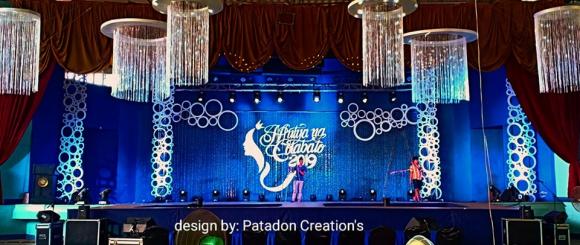Ndbc News Today
DZRH (666 AM) is a radio station owned and operated by Manila Broadcasting Company.The station's studio is located at Design Center of the Philippines, Vicente Sotto St., CCP Complex, Pasay (beside Star City); while its transmitter is located along I. Marcelo St., Brgy. August 20 – News reports stated that former Calauan, Laguna Mayor Antonio Sanchez, the mastermind in the rape and murder of Eileen Sarmenta and Allan Gomez in 1993, 'could have walked free in the next two months' after spending 25 years in prison, citing 'good conduct' according to the document bearing the signature of Bureau of Corrections. I consent to receive communications via email about news, services, marketing and product updates (from Samsung) Samsung will use the personal data provided above to provide you with a call to discuss your interest in our products and services. Upcoming Terra Constellation Exit. NASA LANCE Near Real-Time (NRT) MODIS Land Processing Update. View More MODIS News Tools The MODIS Tools section has a complete listing of web-based tools that can be used to access a wide variety of MODIS Data, along with an array of links and a summary of each tool. Learn More About MODIS Tools. A space rock, which weighs 66 pounds, was discovered more than 30 years ago in a garden in Blaubeuren, in southern Germany. “In 1989, a homeowner was digging a cable trench on his property in Blaubeuren, in the German region of Swabia, when his spade hit a rock,” explains the German Aerospace Centre (DLR) in a statement.
Nbc News Today Video
Videonystagmography Testing
At NDBC we use Videonystagmography testing (VNG) technologies for testing inner ear and central motor functions. Videonystagmography testing is considered the new standard for testing inner ear functions over Electronystagmography (ENG), because VNG measures the movements of the eyes directly through infrared cameras, instead of measuring the mastoid muscles around the eyes with electrodes like the previous ENG version. VNG testing is more accurate, more consistent, and more comfortable for the patient. By having the patient more comfortable and relaxed, consistent and accurate test results are more easily achieved.
VNG testing is used to determine if a vestibular (inner ear) disease may be causing a balance or dizziness problem, and is one of the only tests available today that can decipher between a unilateral (one ear) and bilateral (both ears) vestibular loss. VNG testing is a series of tests designed to document a persons ability to follow visual objects with their eyes and how well the eyes respond to information from the vestibular system.
This test also addresses the functionality of each ear and if a vestibular deficit may be the cause of a dizziness or balance problem. To monitor the movements of the eyes, infrared goggles are placed around the eyes to record eye movements during testing. VNG testing is non-invasive, and only minor discomfort is felt by the patients during testing as a result of wearing goggles. Appointments usually last about 1.5 hours, and testing is covered by all insurances.


Nbc News Today Youtube
There are 4 main parts to a VNG test:
Nbc News Today Show
- Occular Mobility
You will be asked to have your eyes follow objects that jump from place to place, stand still, or move smoothly. The technician will be looking for any slowness or inaccuracies in your ability to follow visual targets. This may indicate a central or neurological problem, or possibly a problem in the pathway connecting the vestibular system to the brain. - Optokinetic Nystagmus
You will be asked to view a large, continuously moving visual image to see if your eyes can appropriately track these movements. Like the occular mobility tests, the technician will be looking for any slowness or inaccuracies in your ability to follow visual targets. This may indicate a central or neurological problem, or possibly a problem in the pathway connecting the vestibular system to the brain. - Positional Nystagmus
The technician will move your head and body into various positions to make sure that there are no inappropriate eye movements (nystagmus), when your head is in different positions. This test is looking at your inner ear system and the condition of the endolymph fluid in your semi-circular canals. The technician is verifying that small calcium carbonate particles called otoconia are not suspended in the fluid and causing a disturbance to the flow of the fluid. - Caloric Testing
The technician will stimulate both of your inner ears (one at a time) with warm and then cold air. They will be monitoring the movements of your eyes using goggles to make sure that both of your ears can sense this stimulation. This test will confirm that your vestibular system for each ear is working and responding to stimulation. This test in the only test available that can decipher between a unilateral and bilateral loss.



